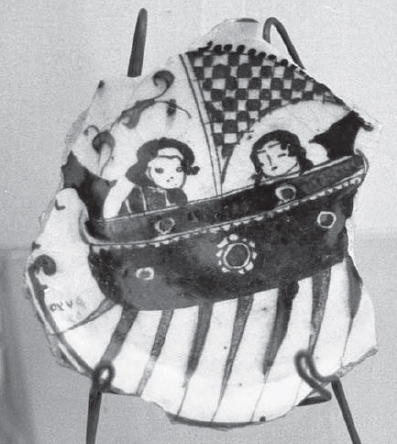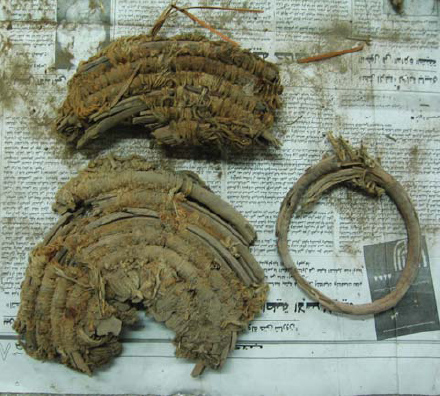
Saladin clearly used religion to strengthen his political, military and diplomatic position, but there is no reason to suppose that his personal piety was anything other than genuine. Nor was there a reason for his faith and his ambitions to clash. Indeed they generally went hand in hand, as when, in 1189, Saladin travelled to Jerusalem to celebrate the Islamic ‘Feast of Sacrifice’ while at the same time emphasizing the religious significance of a city he had regained for Islam. On the other hand Saladin’s awareness that Jerusalem was similarly important to his Crusader opponents probably made peace negotiations more complicated. Nor was Saladin superstitious, unlike so many Muslim and Christian rulers of his day. In September 1186, for example, he refused to believe a popular astrological prediction that the world would end in a universal flood and whirlwind caused by a conjunction of six planets in the zodiacal sign of Libra.
Jihad was central to Saladin’s propaganda war against rival Muslim rulers, but he went beyond mere words and shed a great deal of Muslim blood in his campaigns to unite the Islamic Middle East against the Crusader menace. Saladin also struggled to unite the Muslims of the region in religious loyalty to the Sunni caliph in Baghdad. Despite these efforts Saladin often found the ‘Abbasid caliphs unhelpful, largely because the caliphs themselves wanted to lead the jihad politically as well as spiritually. Whereas Caliph al-Mustadi (1170–80) had generally been neutral, his successor al-Nasir (1180–1225) was much more suspicious. To make matters worse, al-Nasir was in direct competition with Saladin to take control of Zangid Mosul in northern Iraq, and during this period the ‘Abbasid Caliphate re-emerged as a significant regional power with a large territory.

Part of a broken late 12th- or early 13th-century Egyptian ceramic bowl showing men in a galley. Though very stylized, this little picture nevertheless illustrates a form of oared ship that was essentially the same as those used by the Byzantine Empire and by the Mediterranean states of Western Europe. (Museum of Islamic Art, inv. no. 5335.65, Cairo; author’s photograph)
Like Nur al-Din, his predecessor in Syria, Saladin extended the struggle between Sunni and Shia Islam into the fields of art and architecture, although most such cultural patronage came from leading members of his army, administration and family rather than Saladin himself. As a result there was a great increase in the number of mosques and madrasah schools, particularly in the cities, under Saladin and his Ayyubid successors. Syrian madrasahs of this period often contained the tombs of their founders and Saladin’s Ayyubid successors would, for example, use the madrasah-tomb of Saladin for their own Friday prayers.

One of the rarest but also most damaged items to be found in the hoard of military material from a forgotten stairwell in the Citadel of Damascus are parts of a shield made of a spiral of cane bound with cotton. (Syrian National Museum Conservation Department, Damascus; author’s photograph)
Family solidarity was a central feature of Saladin’s political and military system. For example, the chronicler Ibn al-Azraq of Mayyafariqin was in Damascus during the winter of 1170–71 where he saw a huge caravan set out, taking Saladin’s brother Shams al-Dawla Turan Shah, his family and dependants to Egypt where Saladin was starting the process of building a family power base. It was said to consist of over 70,000 camels with up to three women and five small children riding each animal. However, the solidarity of Saladin’s extensive family was sometimes more theoretical than real, the sultan having particular problems with his brave and efficient but independent-minded nephew Taqi al-Din. According to Ibn al-’Athir the younger man was noted for his skill in the art of fortifications and he was clearly admired by his uncle Saladin. Nevertheless Taqi al-Din virtually deserted the struggle against the Third Crusade to pursue his own ambitions in eastern Turkey and northern Syria.
Marriage alliances between elite families were as important in the medieval Islamic world as they were in medieval Europe, and Saladin certainly made use of them. In 1176 his marriage to ‘Ismat al-Din Khatun, the daughter of Mu’in al-Din Ünür of Damascus and widow of Nur al-Din, provided Saladin with a personal link with two rulers who had preceded him. Similarly, Saladin sought to cement the loyalty of important military leaders such as the Turk Muzaffar al-Din Gökböri, who had governed Irbil in northern Iraq since the age of 14. In 1186 Saladin arranged the marriage between his younger sister al-Sitt Rabi’a Khatun and Gökböri. Within months that Turkish warrior repaid Saladin handsomely at the battle of Hattin. It is also worth noting that the women in Saladin’s family played a role in the cultural struggles of the time. For example, shortly after Saladin retook Jerusalem from the Crusader Kingdom, Rabi’a Khatun established a madrasah there, which was intended for Nasih al-Din ibn al-Hanbali, a teacher and leading member of Saladin’s entourage. Rabi’a Khatun then attended his inaugural lecture, seated behind a curtain.